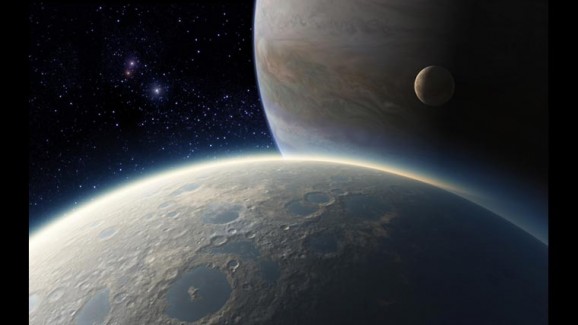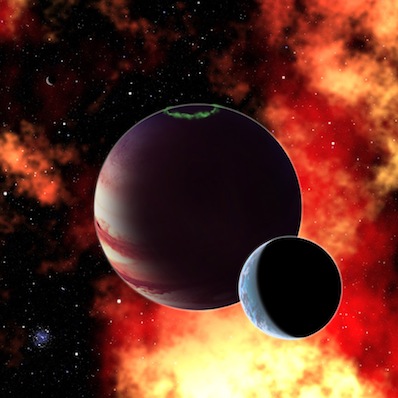There May Be Habitable Moons Beyond Our Solar System
 Stephen Hawking, like David Attenborough, believes earthlings are in for some tough times ahead. Hawking has said he thinks it’s “almost certain” that some kind of catastrophe like global warming or nuclear war will ravage earth within the next millennium, and thus, it’s “essential” that we start exploring our space colonization options.
Stephen Hawking, like David Attenborough, believes earthlings are in for some tough times ahead. Hawking has said he thinks it’s “almost certain” that some kind of catastrophe like global warming or nuclear war will ravage earth within the next millennium, and thus, it’s “essential” that we start exploring our space colonization options.
To that end, scientists have made some important discoveries concerning potentially habitable exoplanets and dwarf planets nearby, and now believe that some moons outside of the solar system might also be habitable. They believe that the now reassigned Kepler telescope will provide us with data about exomoons that may be conducive to life. A recent study by scientists from McMaster University and the University of Antioquia focuses on what makes these celestial bodies habitable. Heat and atmosphere are important factors, but they’re realizing that perhaps even more important than that is their magnetic fields.
Temperature is an obvious factor, especially when it comes to liquid water. This relies on the relationship between a moon and the planet it orbits. Energy comes from the light and heat reflected by that planet, and in some cases, thermal emissions or extreme greenhouse effects can render a moon too hostile to live on. Io, Jupiter’s nearest moon, has an elliptical shape due to Jupiter’s gravity, and the resulting orbit produces friction that causes volcanoes.
The position of a moon relative to its host planet is also crucial. Scientists have begun to examine the magnetic fields of planets, which over time impacts conditions on their satellites, especially given that most moons don’t have their own magnetic fields. A planet’s magnetosphere may extend huge distances, such as Jupiter’s, but their influence evolves over time, expanding with the decrease of stellar wind pressure. Researchers have attempted to determine how, how much, and over what period of time a planet’s magnetosphere will affect its moon(s), and are applying their mathematical models to potential future homes of the human race.
 They have concluded that when exomoons are far enough away from their host planets, more than 20 planetary radii, they essentially behave like planets orbiting a star. Light and heat from the host planet don’t affect them much, and they’ll never be within the influence of the host planet’s magnetosphere, which makes it unlikely that they’re candidates for life.
They have concluded that when exomoons are far enough away from their host planets, more than 20 planetary radii, they essentially behave like planets orbiting a star. Light and heat from the host planet don’t affect them much, and they’ll never be within the influence of the host planet’s magnetosphere, which makes it unlikely that they’re candidates for life.
Exomoons that are close to their host planets, fewer than 5 planetary radii, are likely to be absorbed into the planet’s magnetosphere fairly quickly. This decreases the chances for long-term colonization unlikely due to the light and heat from their proximity.
Exomoons that are a moderate distance from their host planets, 5-20 planetary radii, might hold more promise. Depending on the planet’s size and characteristics, the magnetosphere would likely reach these exomoons in just over 4 billion years. Scientists believe that most exomoons fall within this range. We’re talking about a Goldilocks scenario here. An exomoon has to be firmly outside the habitable edge of a planet, but inside the planet’s magnetosphere. Researchers believe that by concentrating on the magnetic fields of planets, we might be able to narrow down the candidates for habitability. Stephen Hawking would approve.












